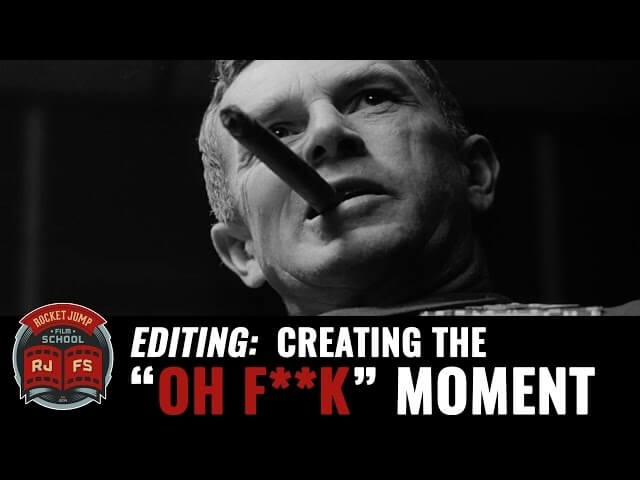How skillful editing can help create the “oh fuck” moments in films

Film editing has been called “the invisible art” with surprising regularity, but it’s an art form nevertheless, as beautifully demonstrated in a new video from RocketJump Film School entitled “Editing: Creating The ‘OH F**K’ Moment.” For those who don’t have $40,000 or more to spend on actual film school, RocketJump’s YouTube tutorials are a ready, budget-conscious alternative. “Creating The ‘OH F**K’ Moment” is an eight-minute mini-class by director/editor Joey Scoma on the various ways editors can use wide shots, closeups, and cuts to provide the audience with necessary information, advance the story, or ratchet up the tension during a scene. Sometimes, less is more. Scoma contrasts 1961’s West Side Story and 2012’s Step Up Revolution to illustrate how holding on a wide shot during a group dance sequence, thus allowing the audience to choose where to look, may be more satisfying than using a lot of quick cuts that show them where to look. And when a film cuts to a closeup after holding on a wide shot for a while, as in Reservoir Dogs and Dr. Strangelove, it indicates to the audience that something dramatic has happened and that the balance of power within a scene has suddenly shifted. This is the “oh fuck” moment.
Scoma is not uniformly recommending long, contemplative wide shots for all scenes in all films. A flurry of quick cuts can be extremely effective, too, as in the shower scene from Psycho and the train derailment from The Fugitive. These are chaotic, violent moments, and the rhythm of the editing helps to indicate that. What’s truly important is to use editing to service the story, rather than just cutting from shot to shot without good reason. Scoma uses sequences from Jaws and Butch Cassidy And The Sundance Kid to show how judicious cuts, made at just the right time, can really help to convey what is important in a scene. Ultimately, Scoma leaves his students with some philosophy on the zen of editing.
Film making is full of starts and stops, actions and cuts. A great film largely comes down to how the story is assembled. All in all, find out what the point is, know what story you’re trying to tell, and take control of the information you’re giving to the audience. Feel free to experiment. Try different things, different takes, whatever. Film is an art. Editing is an art. Just remember to keep in mind the story, the audience, and the STORY. Do that and you’ll know when to cut.